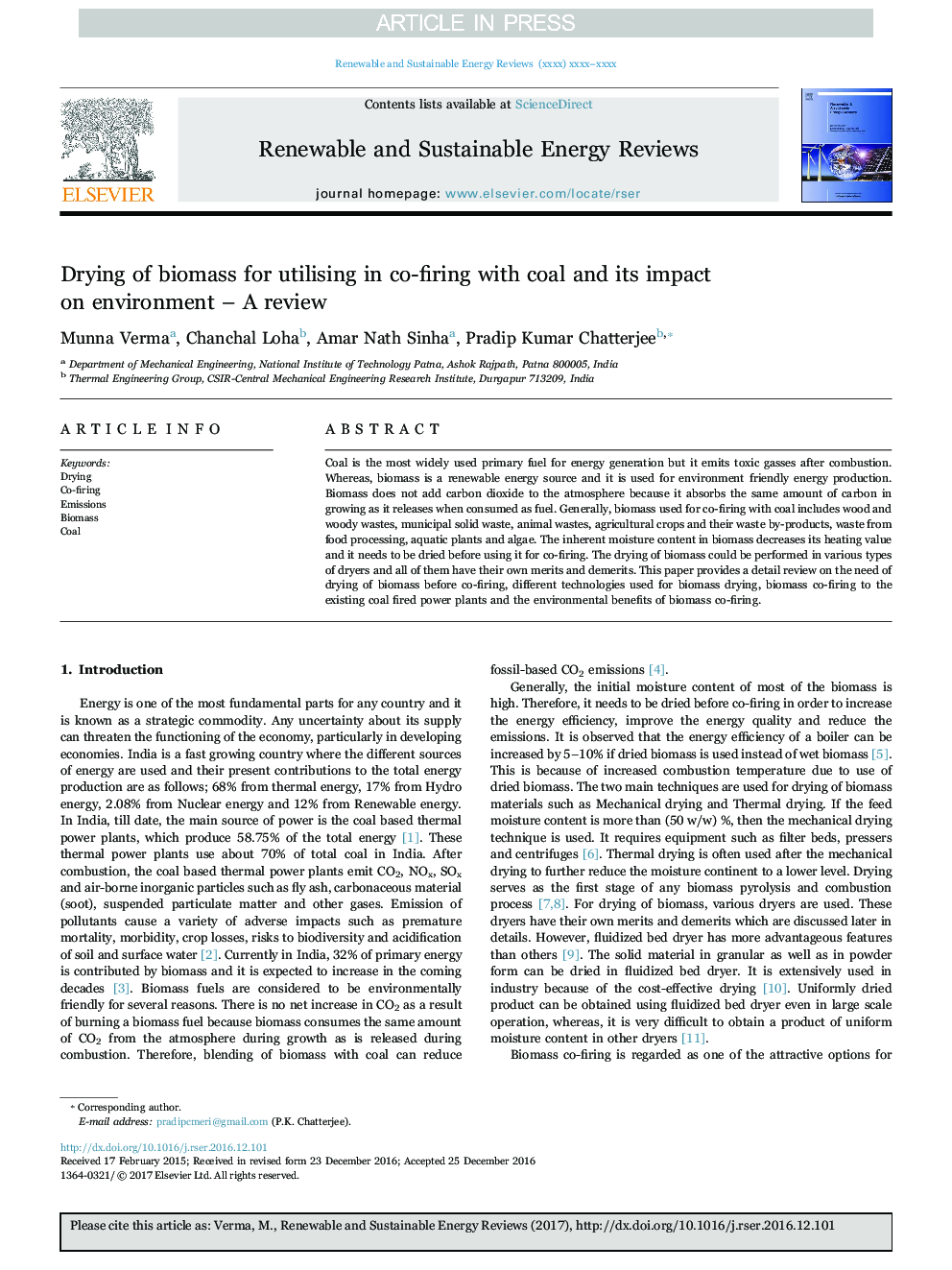| Article ID | Journal | Published Year | Pages | File Type |
|---|---|---|---|---|
| 5483078 | Renewable and Sustainable Energy Reviews | 2017 | 10 Pages |
Abstract
Coal is the most widely used primary fuel for energy generation but it emits toxic gasses after combustion. Whereas, biomass is a renewable energy source and it is used for environment friendly energy production. Biomass does not add carbon dioxide to the atmosphere because it absorbs the same amount of carbon in growing as it releases when consumed as fuel. Generally, biomass used for co-firing with coal includes wood and woody wastes, municipal solid waste, animal wastes, agricultural crops and their waste by-products, waste from food processing, aquatic plants and algae. The inherent moisture content in biomass decreases its heating value and it needs to be dried before using it for co-firing. The drying of biomass could be performed in various types of dryers and all of them have their own merits and demerits. This paper provides a detail review on the need of drying of biomass before co-firing, different technologies used for biomass drying, biomass co-firing to the existing coal fired power plants and the environmental benefits of biomass co-firing.
Related Topics
Physical Sciences and Engineering
Energy
Renewable Energy, Sustainability and the Environment
Authors
Munna Verma, Chanchal Loha, Amar Nath Sinha, Pradip Kumar Chatterjee,
